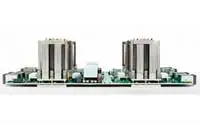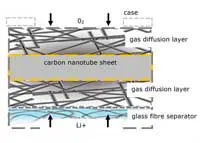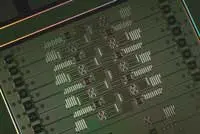Electronics News
Archive : 22 May 2017 год
 Google has announced its second generation Tensor processing unit (TPU), aimed at machine learning and similar applications. While the first generation was designed to accelerate machine learning models, the latest device not only runs these models, but can also train them.
Google has announced its second generation Tensor processing unit (TPU), aimed at machine learning and similar applications. While the first generation was designed to accelerate machine learning models, the latest device not only runs these models, but can also train them.
Each TPU is said to have a processing power of up to 180TFLOPs, but a custom high speed network allows them to be assembled in so called ‘pods’. Each pod contains 64 second generation TPUs, providing up to 11.5PFLOPs.
In a post on its website, Google noted ‘While our first TPU was designed to run machine learning models quickly … training a machine is more difficult than running it and days or weeks of computation on the best available CPUs and GPUs are commonly required to reach state of the art levels of accuracy’.
It adds that, using TPU pods, a large scale translation model that took a day to train using 32 commercially available GPUs can now train to the same accuracy in an afternoon using one eighth of a TPU pod.
Noting that many researchers don’t have access to such computing resources, Google is making 1000 Cloud TPUs, or pods, available at no cost to machine learning researchers via the TensorFlow Research Cloud, essentially providing on demand supercomputing.
Author
Graham Pitcher
Source: www.newelectronics.co.uk
 A research team from Japan’s National Institute for Materials Science (NIMS) says it has developed lithium-air batteries with a storage capacity 15 times that of conventional lithium-ion batteries.
A research team from Japan’s National Institute for Materials Science (NIMS) says it has developed lithium-air batteries with a storage capacity 15 times that of conventional lithium-ion batteries.
Whilst lithium-ion batteries are compact, producing high voltages and have a long life, their energy densities have nearly reached a limit. Acording to the NIMS team, lithium-air batteries have great potential in overcoming this issue, offering highest theoretical energy density.
The team says its research project has developed ‘realistic’ cells with a storage capacity of 30mAh/cm2, compared to the typical 2mAh/cm2 of conventional lithium-ion batteries.
This improvement was achieved through the use of carbon nanotubes (CNTs) as an air electrode material. The team notes the increased capacity can be attributed to CNTs’ large surface area and flexible structure. The researchers are now looking to develop practical high-capacity lithium-air batteries by increasing the energy density in cell layers and removing impurities from the air.
Author
Graham Pitcher
Source: www.newelectronics.co.uk
 IBM says it has built and tested its most powerful universal quantum computing processors, which will be used in IBM Q early-access commercial systems.
IBM says it has built and tested its most powerful universal quantum computing processors, which will be used in IBM Q early-access commercial systems.
Two devices have been built. The first, a 16 qubit processor, will allow for more complex experimentation than the previously available five qubit device. IBM says this will be freely accessible for developers, programmers and researchers to run quantum algorithms and experiments. Meanwhile, a prototype commercial processor with 17 qubits is the most powerful quantum processor created by IBM. Engineered to be at least twice as powerful as what is available on the IBM Cloud, the processor will be the basis for the first IBM Q early-access commercial systems.
"The significant engineering improvements will allow IBM to scale future processors to include 50 or more qubits and demonstrate computational capabilities beyond today’s classical computing systems,” said Arvind Krishna, director of IBM Research and Hybrid Cloud. “These powerful upgrades to our quantum systems allow us to imagine new applications and new frontiers for discovery that are virtually unattainable using classical computers alone.”
Launched in March 2017, IBM Q is an initiative to build quantum computing systems for business and science users. So far, users have run more than 300,000 quantum experiments on the IBM Cloud.
IBM has also developed a new metric to characterise the computational power of quantum systems. Called Quantum Volume, the metric accounts for the number and quality of qubits, circuit connectivity and error rates of operations and IBM’s prototype is said to offer a significant improvement in Quantum Volume.
Author
Graham Pitcher
Source: www.newelectronics.co.uk

